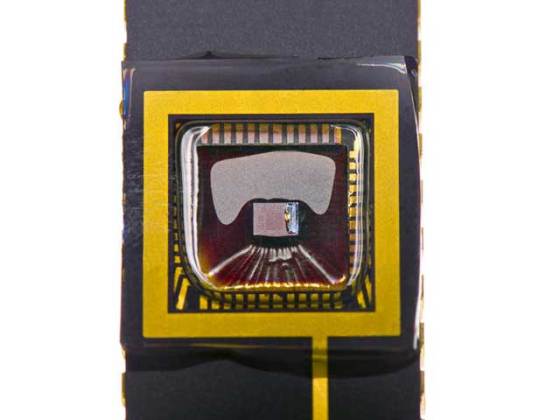Organic sensors increase light sensitivity of cameras
 Analogous to way old camera films recorded light exposition onto photographic film, image sensors in digital camera convert the light from the lens to our digital photos. Researchers at the Technische Universität München (TUM) have developed image sensors that consist of electrically conductive plastics which are more sensitive to light compared to their conventional silicon counterparts.
Analogous to way old camera films recorded light exposition onto photographic film, image sensors in digital camera convert the light from the lens to our digital photos. Researchers at the Technische Universität München (TUM) have developed image sensors that consist of electrically conductive plastics which are more sensitive to light compared to their conventional silicon counterparts.
Prof. Paolo Lugli and Dr. Daniela Baierl from TUM have developed a cost-effective process that allows usage of organic compound ultra-thin films. The challenge was in applying the organic compound solution to the surface of image sensors. The researchers tested spin- and spray-coating methods to apply the organic compound in its liquid form as precisely and cost-effectively as possible. Their goal was to create a thin and smooth plastic film, and proven to be the best method, weather they used a simple spray gun or a spray robot.
Organic sensors have proven to be up to three times more sensitive to light than conventional CMOS sensors, whose electronic components conceal some of the pixels, and therefore the photoactive silicon surface. Surface sprayed with organic sensors is 100 percent light-sensitive, and the process of spray-coating simplifies the production process since every single pixel can be sprayed at the same time.
Another advantage of the plastic sensors is that different chemical compounds can be used to capture different parts of the light spectrum. For example, the PCBM and P3HT polymers are ideal for the detection of visible light, while other organic compounds, like squaraine dyes, are sensitive to light in the near-infrared region. Combined with their low noise and high frame rate properties, organic sensors could find various uses.
“By choosing the right organic compounds, we are able to develop new applications that were too costly up until now”, said Prof. Paolo Lugli, who holds the Chair of Nanoelectronics at TUM. “The future uses of organic infrared sensors include driver assistance systems for night vision and regular compact and cellphone cameras. Yet, the lack of suitable polymers is the main hurdle.”
Since the chemical composition of the polymer spray coating can be easily altered, the production of different types of sensors could be done without other changes in production line. This could enable production of for low-cost infrared sensors aimed at compact cameras and smartphones. While there are people who would say that organic sensors aren’t durable enough, the advances in materials science and the fact we tend to swap our gadgetry at a relatively fast pace could enable wider adoption of organic electronics.
For more information, read the article published in the Nature Communications: “A hybrid CMOS-imager with a solution-processable polymer as photoactive layer”.










Cool! This new invention is the new frontier of organic sensor in cameras. What an amazing item!